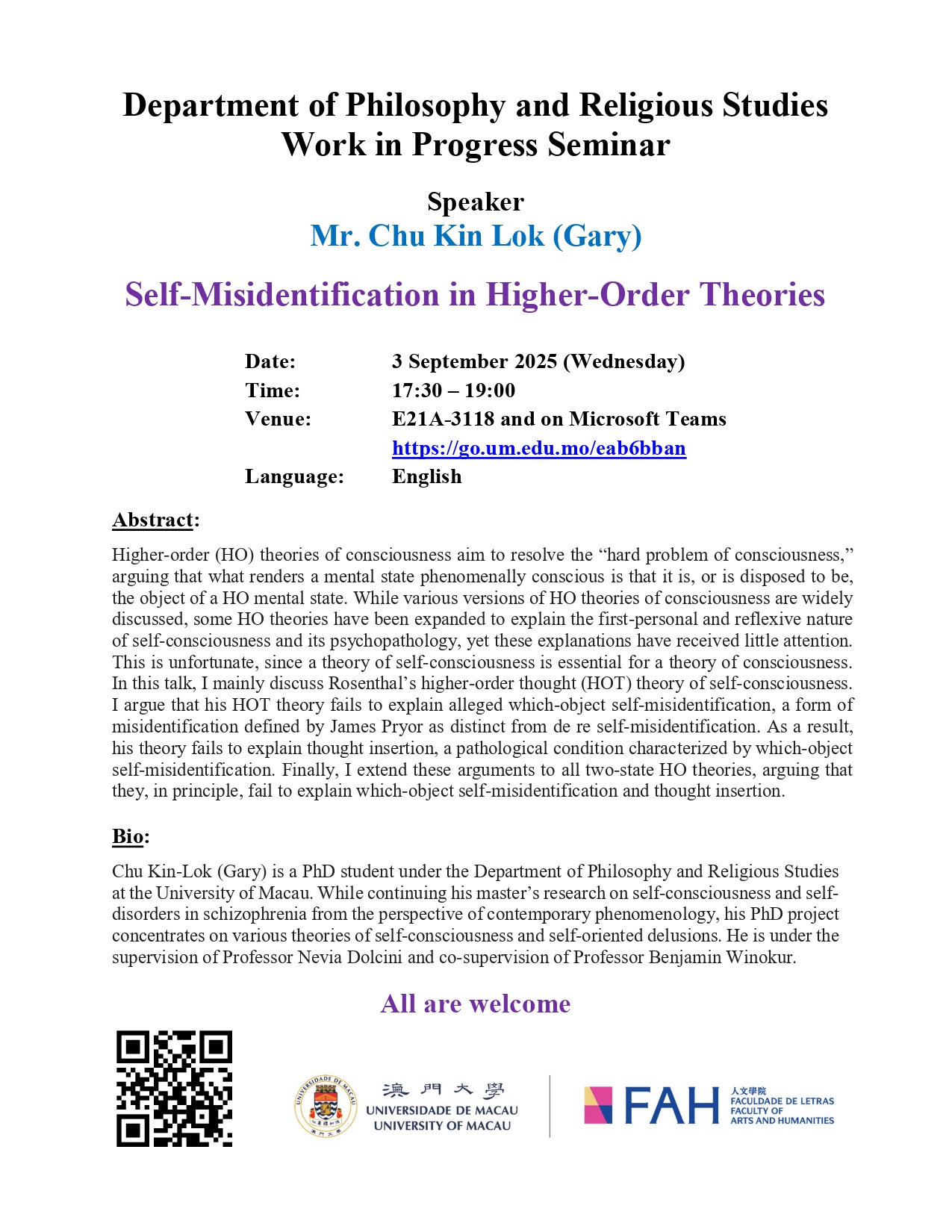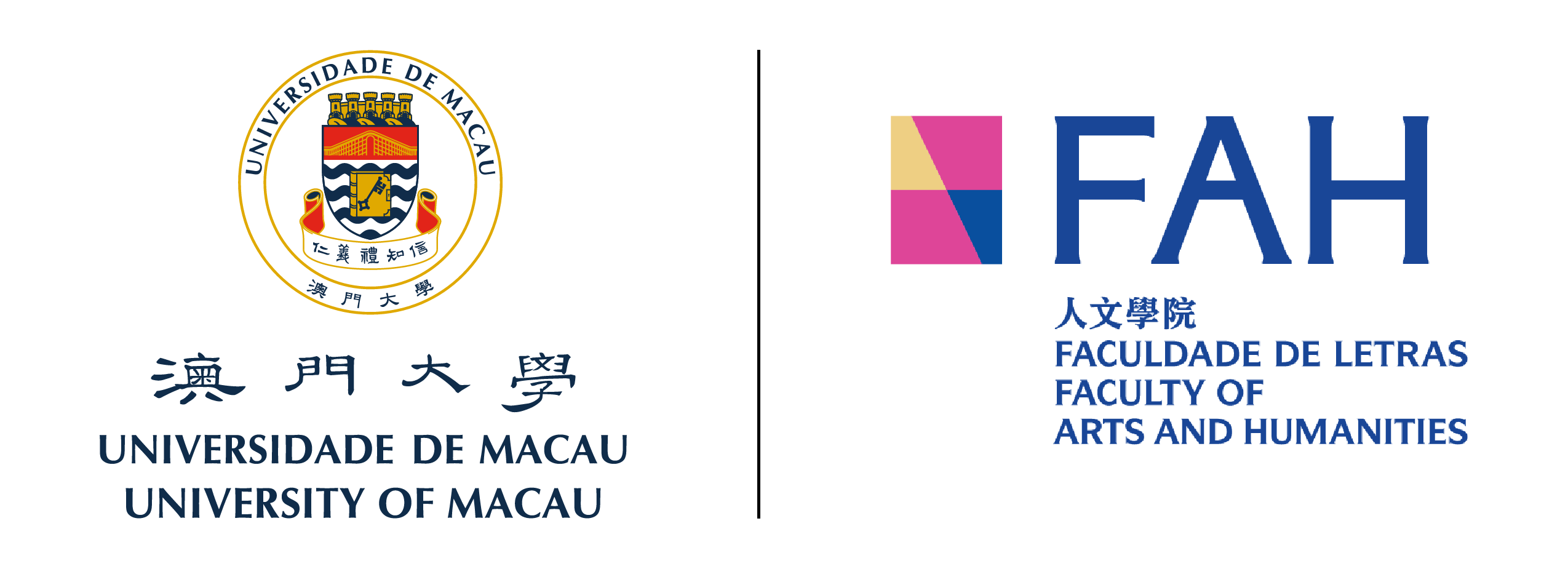

FAH/DPHIL Work-in-progress Seminar – “Self-Misidentification in Higher-Order Theories” by Mr. Chu Kin Lok
2025-09-03 @ 5:30 pm ~ 7:00 pm
Microsoft Teams: https://go.um.edu.mo/eab6bban
Abstract
Higher-order (HO) theories of consciousness aim to resolve the “hard problem of consciousness,” arguing that what renders a mental state phenomenally conscious is that it is, or is disposed to be, the object of a HO mental state. While various versions of HO theories of consciousness are widely discussed, some HO theories have been expanded to explain the first-personal and reflexive nature of self-consciousness and its psychopathology, yet these explanations have received little attention. This is unfortunate, since a theory of self-consciousness is essential for a theory of consciousness. In this talk, I mainly discuss Rosenthal’s higher-order thought (HOT) theory of self-consciousness. I argue that his HOT theory fails to explain alleged which-object self-misidentification, a form of misidentification defined by James Pryor as distinct from de re self-misidentification. As a result, his theory fails to explain thought insertion, a pathological condition characterized by which-object self-misidentification. Finally, I extend these arguments to all two-state HO theories, arguing that they, in principle, fail to explain which-object self-misidentification and thought insertion.
Bio
Chu Kin-Lok (Gary) is a PhD student under the Department of Philosophy and Religious Studies at the University of Macau. While continuing his master’s research on self-consciousness and self-disorders in schizophrenia from the perspective of contemporary phenomenology, his PhD project concentrates on various theories of self-consciousness and self-oriented delusions. He is under the supervision of Professor Nevia Dolcini and co-supervision of Professor Benjamin Winokur.

